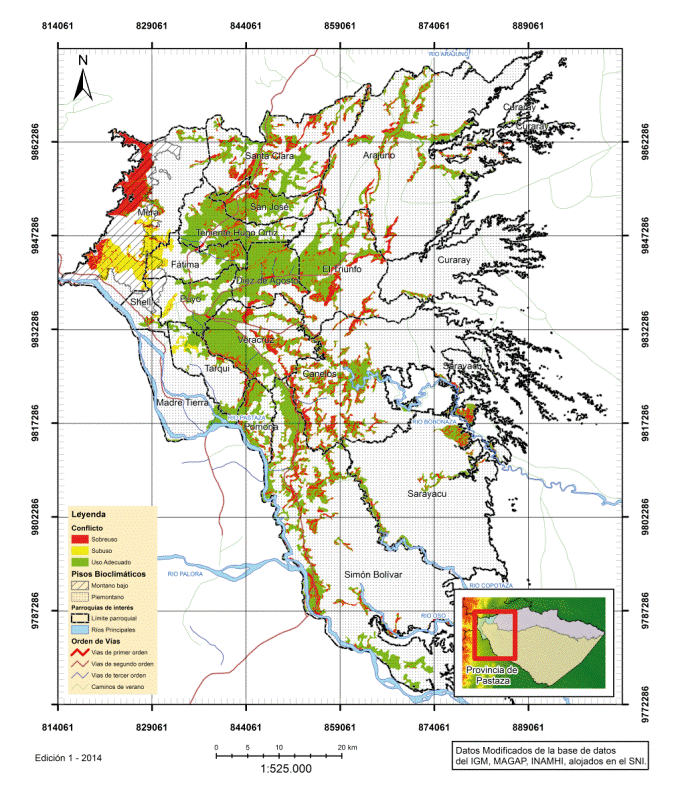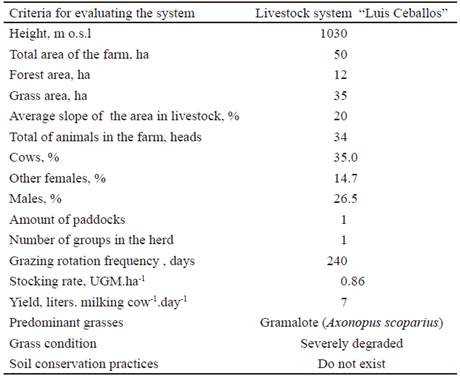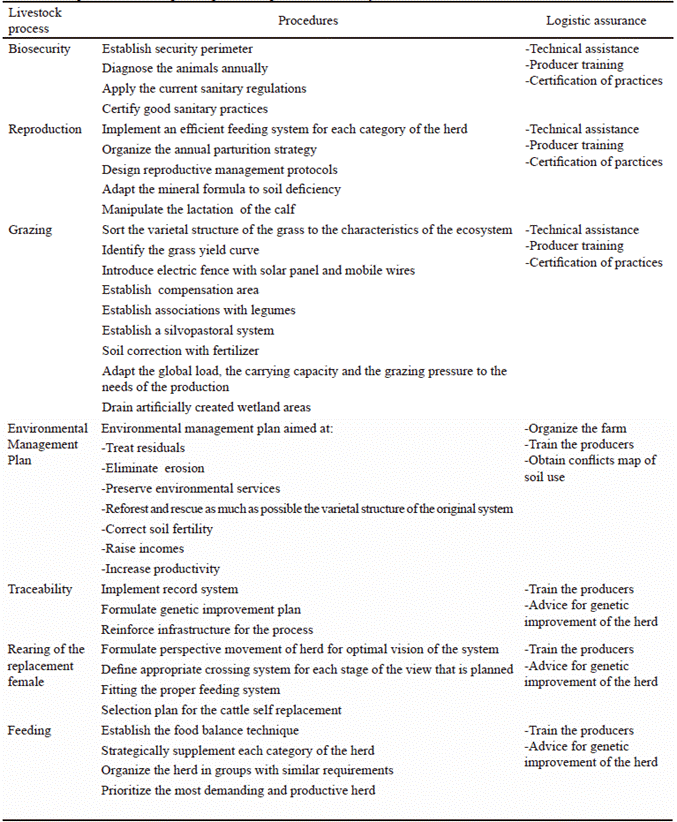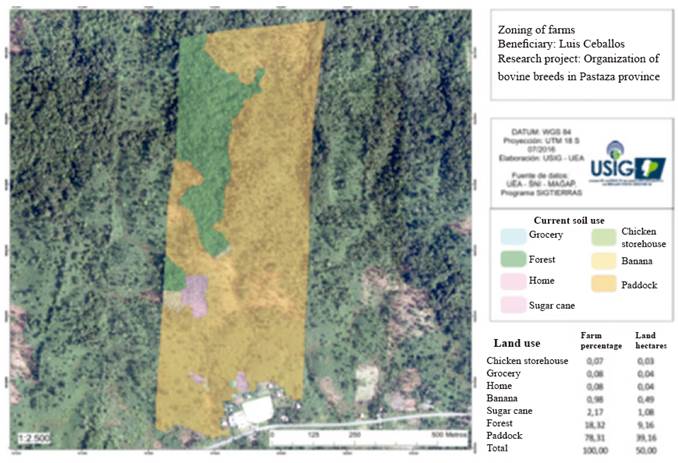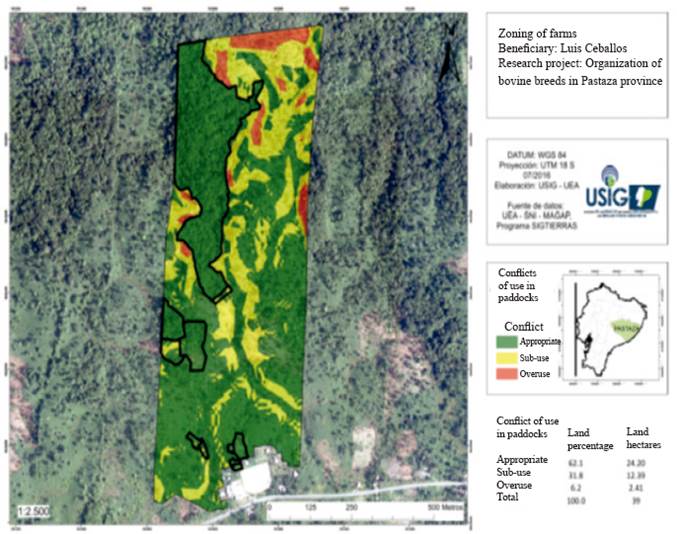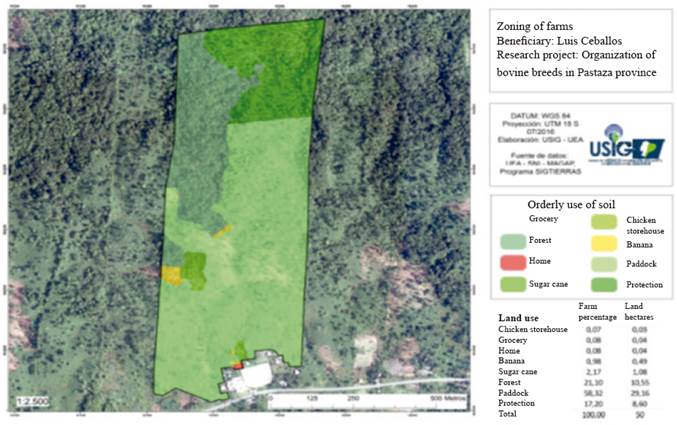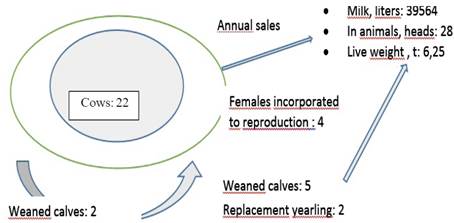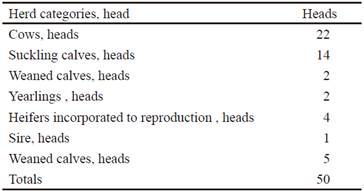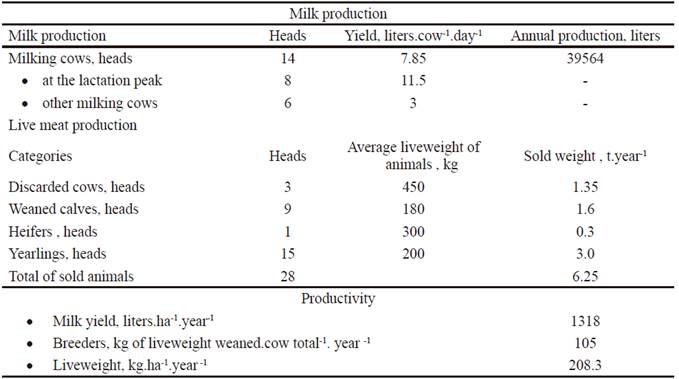The Amazon Region maintains one of the largest tree reserves of the earth, an extensive biological diversity and is considered a conflict zone due to the fragility of its ecosystems for different uses of forestry activities (López et al. 2013). Its main conflict is between the potential use of its ecosystems, with the use of land in economic activities (Nieto and Caicedo 2011 and Grijalva et al. 2011). That is the reason for the urgency of organizing the anthropic activity, based on existing national and regional policies, in order to mitigate in a first stage and subsequently reverse the impact of these activities on ecosystems with potential for use not appropriate for most of the productive activities that are conducted in them.
López (2015) and Massiris (2002) define territorial organization as the spatial projection of social, cultural, environmental and economic policies in a society. This has three complementary aspects: diagnosis of the territory; territorial planning. In most of the legislation on territorial organization, the objectives are aimed at promoting economic development, improving the quality of life and protecting the natural environment (Sanabria 2014).
Massiris (2012) defines land organization as the strategy through which anthropic activities that affect the environment are organized, in order to achieve an adequate quality of life, preventing or mitigating environmental problems. Land organization, as part of environmental management, identifies, distributes, organizes and regulates human activities in a territory according to criteria and priorities to mitigate, stop and reverse the degradation of ecosystems. It is considered a tool that integrates procedures conducive to the integral management of productive systems, including the concept of sustainable or sustainable development (Zoido Naranjo 2010).
In the strategic guidelines of the organization plans of the provinces from the Amazonian territory of the Republic of Ecuador, it is stipulated to take advantage of the natural heritage in a sustainable way, the responsible use of natural resources, and the promotion of eco-systemic sustainability of the economy through the implementation of clean production technologies and practices (López 2015 and Salas Bourgoin 2011).
The objective of this study is to present the proposal of animal husbandry organization in the livestock system "Luis Ceballos", in Pastaza province from the Ecuadorian Amazon.
Materials and Methods
For the organization of livestock systems, the management model that is shown in figure 1 was used (Vargas et al.2015). It was started with the diagnosis of the productive system as a support point to establish the organization program (Sanabria 2014).
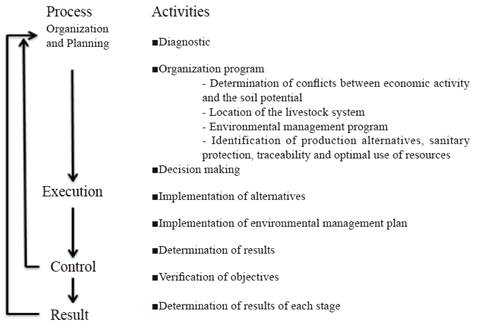
Figure 1 Diagram of the proposed management model for sustainable livestock production in the Ecuadorian Amazon (source: Vargas et al.2015)
As auxiliary tools, layers of various soil, climatic and relief factors were combined through the geographic information system (GIS). A map of conflicts between the use of soils and the productive capacity of ecosystems was created for productive activities in the agricultural sphere (figure 2), prepared for livestock management in Pastaza province from the Republic of Ecuador (Vargas et al. 2015 and Benítez et al. 2015).
A non-experimental design was applied, which controlled the effects of climatic areas and height ranges, which determine differences in the soil and climatic performance of the territory, located in the agricultural frontier of the province and that modifies the ecosystems productivity and the animal performance, according to the statistical model Measurement of Impact (SMMI) (Torres et al. 2013) to a study in 284 livestock farms. The variables and indicators that define fundamental changes in the productive, environmental, economic and social dimensions were identified and the performance of the livestock units evaluated was typified.
With this information, a panel of experts identified promising alternatives for the implementation of sustainable productions, in the typified systems, through simulation techniques that allowed predicting the performance of the productive activity, with the implementation of the promising alternatives described. The methodology was applied in a participatory way in the case study “Luis Ceballos” livestock system located in the Pastaza canton from Pastaza province whose purpose is the milk production in dual purpose systems.
Results
The diagram that summarizes the procedures followed for land organization in livestock systems is shown in figure 3.
The characteristics of the livestock system are shown in table 1; the identified promising alternatives in table 2 and the procedures that define the adopted alternatives are showed in table 3. With these tools, the map of the existing conflict between the land potential and the current use for the livestock system under study was elaborated. In addition, the risks of degradation to the environment of the productive activities to be implemented were identified. From the producer interests, each productive purpose were spatially located on the farm lands; an environmental management program was designed to create capacities to reduce the risks of negative impacts on the ecosystem, with environmental conservation measures aimed at avoiding or mitigating damage to the ecosystem (Benítez et al. 2015 and Vargas et al.2015) .
Figures 4 and 5 show maps of current soil use and conflicts between land use and the economic potential of the soil.
The 78.31 % of the land is used for grazing, 18.32 % for forests, 2.17 % for sugarcane and the rest for other crops, constructions and other livestock activities. Conflicts of use are found in 14.8 ha in use in grasses and livestock with a vocation for protective forests.
Figure 6 shows the farm organization map. This resolves the conflict between the potential for soil use and the productive activity that is implemented. The decisions adopted were: to use in livestock only the land with vocation for grazing; establish a forest management program; adopt alternatives for the sustainable production of milk under good agricultural practices; increase the stocking rate capacity of the system from the organization of grasses and adopt an environmental management system for the ecosystem protection.
Based on the producer criterion and the limitations imposed by the ecosystem, it was adopted as a purpose to produce milk in a double purpose system in 30ha dedicated to livestock. To rearing the bovine replacement next to the females in the reproduction.
The zootechnical flow of the livestock system is shown in figure 7. The stocking rate capacity was raised to 1.05 UGM.ha-1.year-1. To guarantee the replacement of the herd in reproduction, a herd of 15- head growing females is maintained, which includes the suckling calves. In the reproductive process the birth rates are over 90 %; 14 cows are kept milking, of which 57 % are at the peak of lactation which optimizes the milk production potential, females that are not interested in reproduction are sold and all males at weaning or before the year, which are supplemented to optimize growth and increase the sales weight and yield in 0.85 liters/cow at milking-1.day-1, in relation to current productivity are sold too. The herd structure is showed in table 4 and in table 5 the sales program and the expected productivity when the production system stabilizes.
Discussion
The 82 % of the surface of “Luis Ceballos” farm is subject to soil use pressures in excess of the potential capacity of the system that is considered proper for protective forests. The 78.31 % of this area is used in livestock which is identified as the agricultural activity that causes the highest negative impact on the environment (FAO 2000), is associated deforestation, land compaction due to trampling of cattle, erosion, loss of soil fertility, reduction of biodiversity and contamination of water flows (I) (Murgueitio and Ibrahim 2004, INIAP 2010 and Bravo 2015). In the slopes lands, such as Luis Ceballos system, the greatest risks of negative environmental impact caused by livestock are related to erosion (Benítez et al. 2007 and FAO-FIL 2012).
In the Amazon rain abundance causes over-wetting, nutrient washing and soil erosion (Grijalva et al. 2011, Nieto and Caicedo 2011 and Bravo 2015). In the “Agricultural Frontier” of the Ecuadorian Amazon Region, the relief and rainfall increase the risks of deterioration of the ecosystem and the vulnerability to negative environmental impact due to agricultural activity, especially in soils used for livestock, not suitable for this productive activity without the application of environmental management programs, such as the capacity to respond to environmental risks (Díaz 2010 and Bravo 2015). In Pastaza province from the Republic of Ecuador, 83 % of the land only has a vocation for forestry activities. The 30 % of the land on the agricultural frontier is not suitable for grazing, which adds greater vulnerability to the degradation risks to surfaces in livestock use, in ecosystems already subjected to a pressure of disturbance higher than the capacity of soil use (Vargas et al. 2015).
The edaphoclimatic and relief characteristics prevailing in “Luis Ceballos” system, interact to establish adverse conditions for livestock production, which are linked to the capacity of soil use for the establishment of grasses and forages of high biomass production and rapid growth, which limits the stocking rate capacity of their livestock systems. The acidic pH and over-hydration of the soils from the Amazon Region are considered limiting factors that reduce the possibility of establishing and exploiting promising grasses and / or forages for livestock, which join to the intensity of radiation that arrives, by the constant and thick layer of clouds that appears in the territory, reduce at the same time, the availability of species for the establishment of efficient and productive pastoral and / or forage systems, which reduces the stocking rate capacity in these ecosystems (Benítez et al. 2015 and Bravo 2015).
The land organization as a tool to mitigate the negative impact of livestock on the environment has two dimensions: the location of productive systems on the surfaces with vocation for this activity and the technological alternative that is adopted (Ovalles 2008,Wong González 2010 and Benítez et al. 2015). Using the “soil use conflicts” map as a tool allowed designing an environmental management program aimed to create capacities to reduce the risks of negative impacts to the ecosystem, where conservation measures were directed to avoid or mitigate the damage to the environment (Benítez et al. 2015 and Vargas et al. 2015). In the promising alternatives of adopted livestock production, it was special interest on the processes of reproduction, biosecurity, traceability, animal feeding, grazing management, optimal use of resources and protection of the environment (Benítez et al. 2015), aimed to create positive impacts in the productivity, sustainability of the system and the reduction of environmental damages by the change of the land use in grazing to protection forest.
Conclusions
The methodology for land organization used in this study is based on the combination of tools that start from characterizing the farms as an input element and design as outputs the land organization from the demands of the ecosystem, with the active participation of producers.
The organization allowed restricting the livestock only to the land with a vocation for grazing; adopting alternatives for sustainable production under good agricultural practices and an environmental management system for the ecosystem protection.
The production alternatives adopted improved the indicators of productivity, freed more than 25 % of the land for use in forests, which predisposes to reduce the degradation risks, recover biodiversity and increase the recycling of nutrients in livestock systems.
The land organization following participatory methods of rural innovation allowed establishing each of the processes that are involved in the methodology proposed in this study.











 text in
text in 

